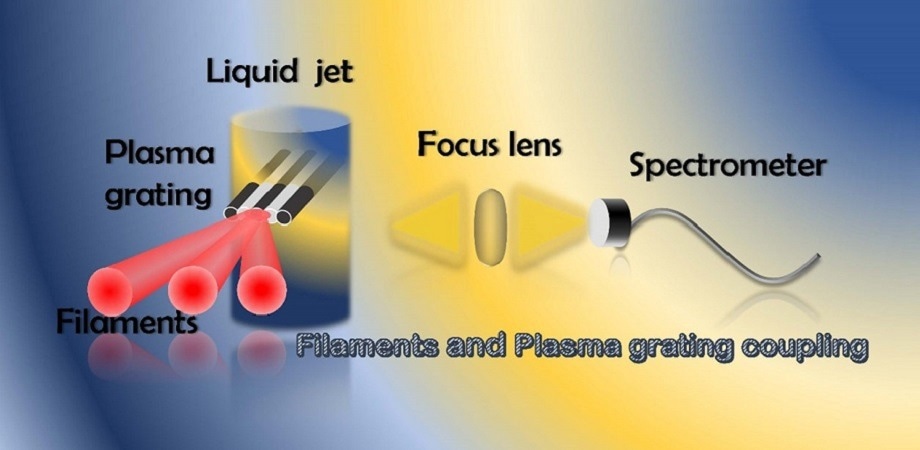For trace element analyses in gases, liquids, and solids, laser-induced breakdown spectroscopy (LIBS) is a rapid chemical analysis technology that has been extensively developed. It induces transient, high-temperature plasma in a sample using a high-power laser pulse. The periodic table’s elements are represented by spectral peaks that the plasma emits as it cools.

Laser filaments and plasma gratings induce breakdown spectroscopy in liquid jet. Image Credit: State Key Laboratory of Precision Spectroscopy, Shanghai, China.
Recent research has expanded LIBS using the more sensitive and stable filament-induced breakdown spectroscopy (FIBS). However, the guided laser intensities in the filamentation itself place an inherent limit on FIBS.
GIBS, or plasma-grating-induced breakdown spectroscopy, has the potential to overcome FIBS’ drawbacks. The unavoidable creation of shockwaves and microbubbles, as well as the drastic changes in liquid pressure surrounding the ablation region, has made efficient laser ablation in liquid a very difficult task.
Researchers recently combined FIBS and GIBS as an effective method for sensitively detecting trace metals in liquid, as reported in the journal Advanced Photonics Nexus.
They showed how to combine strong nonlinear interactions between filaments (coplanar and noncollinear) and various plasma gratings to create the technological advancement known as “F-GIBS” (filament- and plasma-grating-induced breakdown spectroscopy). Fluid jets were used to analyze aqueous solutions as part of the F-GIBS implementation.
With this method of plasma excitation, bubbles created by ferocious plasma explosions and liquid surface fluctuation are neatly avoided. To create plasma gratings that nearly covered the entire jet and excited the liquid sample, two non-collinearly coupled femtosecond laser beams were used.
The plasma gratings and a third filament were lined up to couple nonlinearly in the same plane (vertical to the fluid jet). Without any random filament breakups, the nonlinearly coupled filaments entered the fluid jet across the air-aqueous interface.
F-GIBS provides a promising technique for trace element detection in aqueous solutions with improved sensitivities. Regenerative excitations of plasma gratings demonstrated in this work may serve to enhance some other already-well-developed dual-pulse LIBS techniques, such as plasma reheating and laser induced fluorescence, with plasma re-excitation in much shorter time delays, facilitating convenient use of lasers from the same sources.
Heping Zeng, Study Senior Author and Professor, State Key Laboratory of Precision Spectroscopy, East China Normal University
Journal Reference
Hu, M., et al. (2022) Detection of trace metals in water by filament- and plasma-grating-induced breakdown spectroscopy. Advanced Photonics Nexus. doi:10.1117/1.APN.2.1.016008.